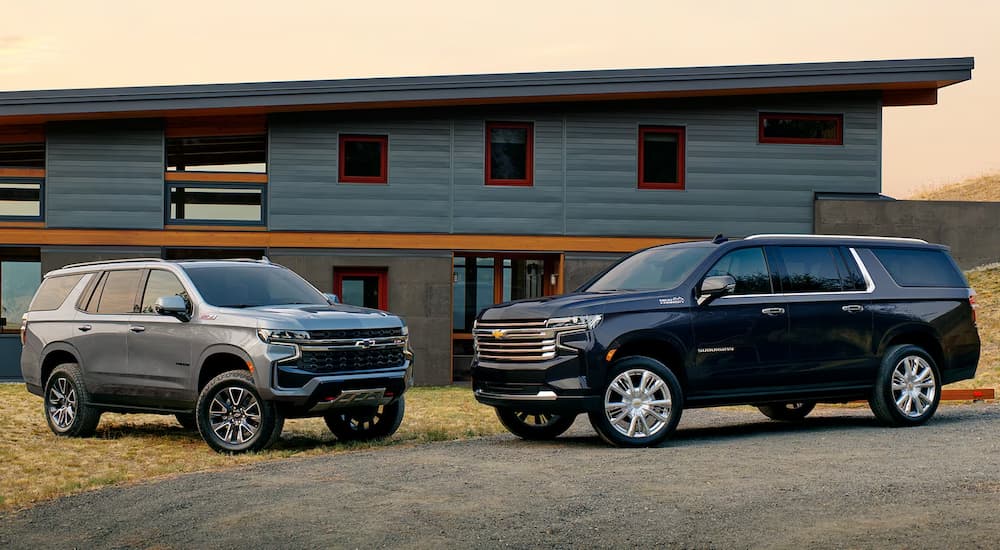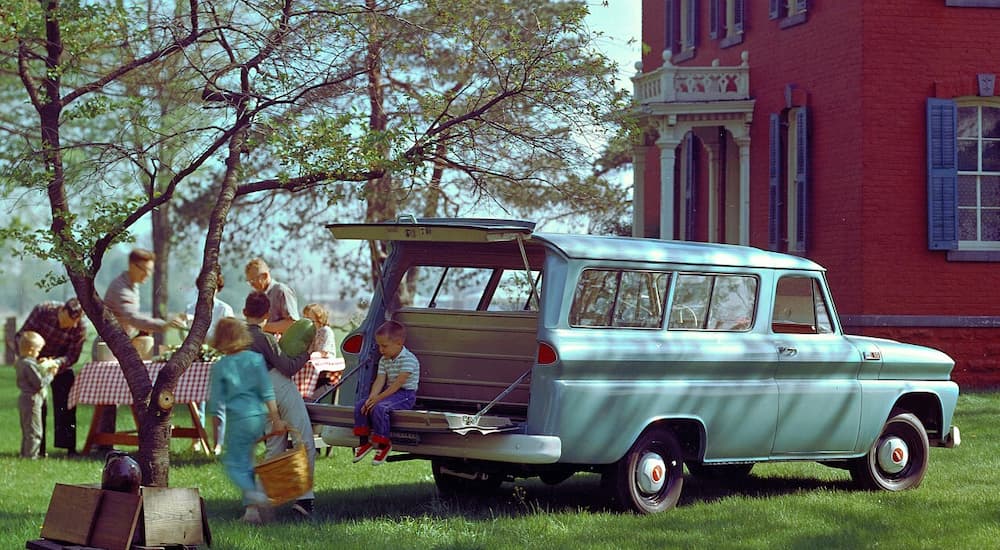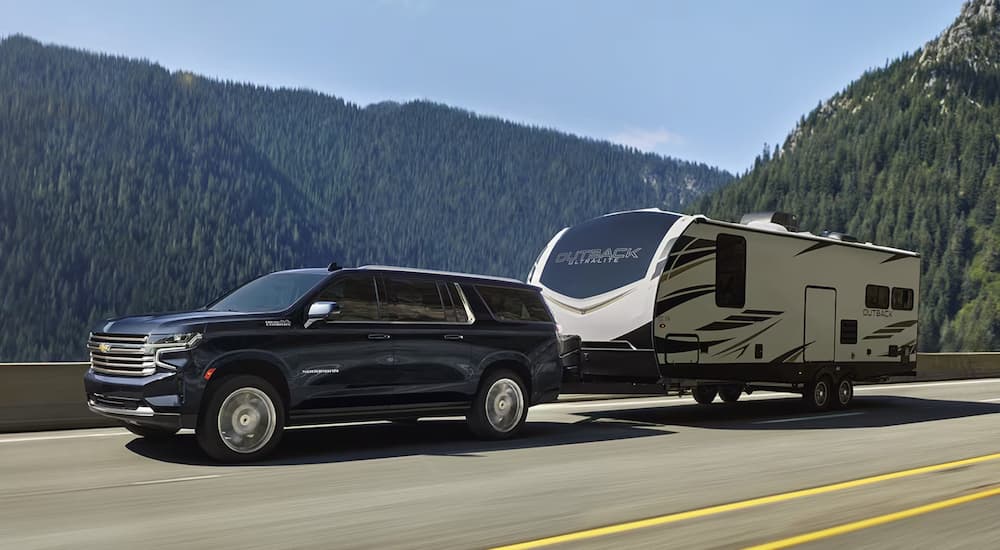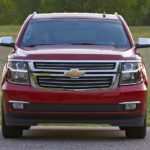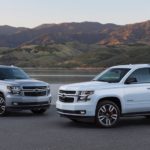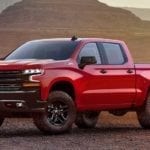You know all about the Chevy Suburban. Of course you do—it’s been around for nearly a century. Without diving into the detailed mathematics of it all, it is extremely likely that every American automotive enthusiast has driven, ridden in, or been in the presence of the Suburban.
The 2024 Chevy Suburban marks this nameplate’s 89th year of production, and a lot has happened in those nearly nine decades. When the first Suburban came out of production in 1935, not every American had electricity in their home, and paved roads were still something of a luxury. In fact, most movies were still shot in black-and-white. And yet, there was the very first Suburban Carryall with seating enough for eight and 115.1 cu.ft. of cargo space.
So, what has kept the Suburban on the market all these years? Chevrolet’s design team certainly has a lot to do with it, keeping their fingers on the pulse of automotive trends and driver needs, but engineering and sheer practicality have a lot to do with it, too. Let’s take a look at what the Chevy Suburban has done to last close to nine decades on the market…
How It Became a Household Name
The early years of the auto industry are truly fascinating. As purveyors of a brand-new product in a pre-internet era, Chevrolet’s insight into sales and customer needs was limited but intense. Ultimately, the success of their entire company depended on their ability to create a product that American customers would be willing to spend a substantial amount of money on, which meant designing something their customers really and truly needed.
While we won’t attempt to settle the “Was the Suburban the first SUV?” debate that has raged for nearly a century, it is generally agreed upon that the 1935 Suburban Carryall was one of the most influential vehicles in establishing the modern context of the SUV. But how did Chevy strike gold with this particular model?
Today, we tend to focus on the “Suburban” name, but when this model made its debut, the “Carryall” part of its name was more important to drivers. The concept of family-centric neighborhood-laden suburbs existed in 1935 but didn’t really take off until after World War II.
Generally speaking, there were urban areas and rural areas, and there were a whole lot of people and things that needed to move between the two. Therefore, creating a vehicle that had a truck base but an enclosed car-style body that could be configured to handle large amounts of passengers or cargo was a huge benefit to farmers, families, delivery drivers, and even civil service workers.
As the decades went on, that appetite—for vehicles that could provide indoor accommodations for people and cargo alike—did not wane. Even as homes grew closer together and communities grew tighter, the need to “carry all” has persisted, thus providing the Suburban with many opportunities to prove itself again the reigning champ in this regard.
Nearly a Century of Updates
Thanks to a near-constant stream of technological updates across the 20th and 21st centuries, the Suburban Carryall and the 2024 Suburban share only a passing family resemblance. In fact, each generation of the Chevy Suburban has been a little different, depending on driver needs.
The 1935 Suburban, for example, did not include features like a clock, heater, or rear bumper. By the 1950s, it had gained a reputation as a “crew” vehicle, meaning workers would pile into a Suburban to head to a work site somewhere that was likely muddy and remote. Therefore, this vehicle was equipped with linoleum flooring and “double-acting” shock absorbers that Chevy explained would improve ride quality.
At the same time, Chevy recognized the role that an eight-passenger vehicle could play in the actual suburbs, which were now flush thanks to the Baby Boom. The 1955 model offered an optional Hydra-Matic automatic transmission, and heating was made available to rear-seat passengers in 1965.
With the signing of the Federal Highway Act of 1956, more Americans were traveling further with their large families, which meant the need for vehicles that could haul equipment and go camping, boating, or road-tripping.
Chevy increased the Suburban’s horsepower and added more doors. While traditionally a two-door model with cargo access, a passenger-side rear door was added in 1967, lending to the Suburban’s popularity as an urban ambulance. Four-door models hit the market in 1973, helping the Suburban transition into the beloved family vehicle we know today through the ’80s and ’90s.
Today’s Chevy Suburban
SUVs officially hit the mainstream in the late 1980s, but few models had as much practice as the Chevy Suburban. Though we were still a few years away from every home having a personal computer and internet connection, Chevy had over five decades of designing a large SUV that could cater to the needs of many driving populations.
As a result, they worked on refining their masterpiece, optimizing engine performance and fuel efficiency, and designing cabins that could make drivers and passengers happy. The vehicle that once offered a rear bumper as an available option now included OnStar connectivity and XM Satellite Radio.
Other great features—previously considered luxurious for a utility vehicle—soon followed as the 2000s progressed. Things like a 355-hp 5.3L V8 engine with a ten-speed automatic transmission were once unheard of but now standard.
Furthermore, safety is now a key element of the modern Suburban’s design. While the 1935 model counted on its highly unusual steel body to protect passengers and cargo, today’s models are not only engineered to keep interior contents safe and secure but are equipped with the Chevy Safety Assist suite of driver assistance features such as forward collision alert and lane keep assist with lane departure warning.
And don’t forget the top shelf features found on the High Country trim, like a premium Bose ten-speaker surround with CenterPoint audio system, heated first- and second-row seats, and power-folding third-row seats.
Suburban Forever!
Ultimately, the Chevy Suburban’s success lies in its ability to tap into a very specific need among drivers and then flexibly adapt to the constantly changing preferences of drivers, all without losing the vision that inspired its production in the first place.
Though there have been many changes and updates to the Suburban over the past 89 years, it remains a best-seller because of this adaptability, as well as its ability to truly “carry all.”
Chevy has already begun teasing the 2025 Suburban, noting that it and its sibling, the Tahoe, will receive major updates in the coming years. Early information indicates that Chevy will be focusing on creating a more hospitable cabin with the technology that drivers need, the comfort that they crave, and a vehicle that looks as good as it drives.
There is also speculation that a hybrid or electric Suburban may be in the future. Regardless of the changes the future brings to the auto industry as a whole, it is likely that the three-row SUV will be a fixture of our roadways for a long time to come because of its unique ability to provide so many drivers with everything they need and want in a reliable vehicle.
